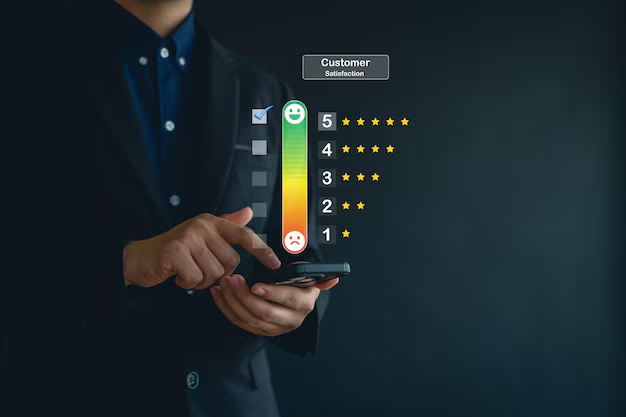Why Do Credit Scores Differ Across Various Platforms?
If you've ever checked your credit score on different platforms and noticed discrepancies, you're not alone. These differing numbers can be confusing, making it harder to understand your financial standing. In today’s digital age, multiple sites offer a glimpse into your credit health, each providing a slightly different picture. Let's explore why this happens, what it means for you, and how to navigate these differences with confidence.
Understanding Credit Scores: A Fundamental Overview
What is a Credit Score?
A credit score is a numerical expression that represents your creditworthiness at any given time. It's primarily based on your credit history, and is used by lenders to assess the risk of lending you money. The most widely recognized scores come from FICO® and VantageScore.
How Are Credit Scores Calculated?
Credit scores are calculated using a variety of factors, including:
- Payment History: Timely payments boost scores, while late payments can penalize them.
- Credit Utilization: High balances relative to your credit limit can lower your score.
- Length of Credit History: Longer histories with consistent payments raise your score.
- New Credit: Recent inquiries or new accounts might affect your score.
- Credit Mix: A diverse combination of credit cards, installment loans, and mortgage accounts is viewed positively by creditors.
Understanding these factors helps demystify why scores may vary across platforms.
Why Credit Scores Differ Across Platforms
Different Scoring Models
The primary reason for different credit scores across platforms is the use of various scoring models. FICO and VantageScore, two predominant scoring models, can yield different results owing to the weight they assign to various factors.
- FICO Scores: Often used by lenders. Their traditional models range from 300 to 850. FICO has multiple versions in use, which can cause slight variations.
- VantageScore: A newer model developed to compete with FICO. It also ranges from 300 to 850 but differs in its calculation method.
Variations in Data Reporting
Credit bureaus such as Equifax, Experian, and TransUnion collect your financial data independently. Often, the information they receive can differ because not all creditors report to all bureaus. This inconsistency can result in varying credit scores.
Timing of Score Updates
When credit information is reported can also impact your score. If one credit bureau updates your information before another, it might lead to temporary discrepancies between scores on different sites.
The Impact of Multiple Credit Scores
Lender Considerations
Different lenders might look at different scores, which can affect your borrowing potential:
- Mortgage Lenders: Typically use FICO scores but might pull from all three credit bureaus.
- Credit Card Issuers: May use a proprietary scoring model or a single bureau.
Consumer Confusion
Seeing different scores can be confusing, especially when trying to make critical financial decisions. It's essential to understand that no single score is more "correct" than another. Instead, they reflect different perspectives of your creditworthiness at a moment in time.
Navigating Credit Score Variability
How to Choose Which Score to Monitor
It might be tempting to base your decisions on the highest score you find, but a more strategic approach involves knowing which score your potential lender uses:
- Research Lenders: Understand which credit scores your prospective lenders use.
- Adopt a Consistent Score: Monitoring one score consistently instead of fixating on different scores can help track overall trends in your credit health.
Improving Your Credit Health
Instead of focusing on number discrepancies, concentrate on improving the factors influencing your score:
- Regularly Check Your Credit Report: Ensure that all information is accurate and dispute any discrepancies.
- Build a Strong Payment History: Pay your bills on time.
- Manage Your Credit Utilization: Keep your credit card balances low relative to your limits.
- Avoid Opening Too Many New Accounts at Once: This practice can negatively impact credit in the short term.
Handy Tips for Better Score Management
Practical Steps to Enhance Credit Scores:
- Pay All Bills on Time: Consistent timely payments are crucial for a healthy score.
- Optimize Credit Utilization Rate: Aim for below 30% utilization to improve your score.
- Regularly Review Credit Reports: Check for errors annually at minimum.
- Limit Hard Inquiries: Too many hard inquiries in a short period can ding your score.
A Quick Reference Summary
Here's a snapshot of how to handle credit score discrepancies:
🔍 Key Takeaways:
- Understand Your Scores: Familiarize yourself with FICO and VantageScore models.
- Consistent Monitoring: Choose a single credit score to track consistently.
- Accuracy Matters: Verify the accuracy of your credit reports frequently.
- Focus on Credit Improvement: Implement strategies that positively affect all types of scores.
- Be Informed: Know which score lenders use for applications.
Harnessing the Power of Credit Awareness
Your credit score isn't static, nor does it have to be puzzling. By understanding scoring models, being proactive about your credit health, and focusing on the factors within your control, you can navigate credit score discrepancies with greater ease. Remember, knowledge and consistent management are your best allies in maintaining and improving your credit profile.
By adopting these strategies and insights, you can face your financial future with confidence, knowing that credit score variability can be a manageable and educational part of your financial journey.

Related Topics
- a Credit Score Is Based In Part On
- a Good Credit Score
- Can Checking Credit Score Lower It
- Can I Rent An Apartment With a 540 Credit Score
- Can Medical Bills Affect Your Credit Score
- Can You Have a Credit Score Without a Credit Card
- Do Balance Transfers Hurt My Credit Score
- Do Medical Bills Affect Credit Score
- Do Medical Bills Affect Your Credit Score
- Do Medical Collections Affect Credit Score